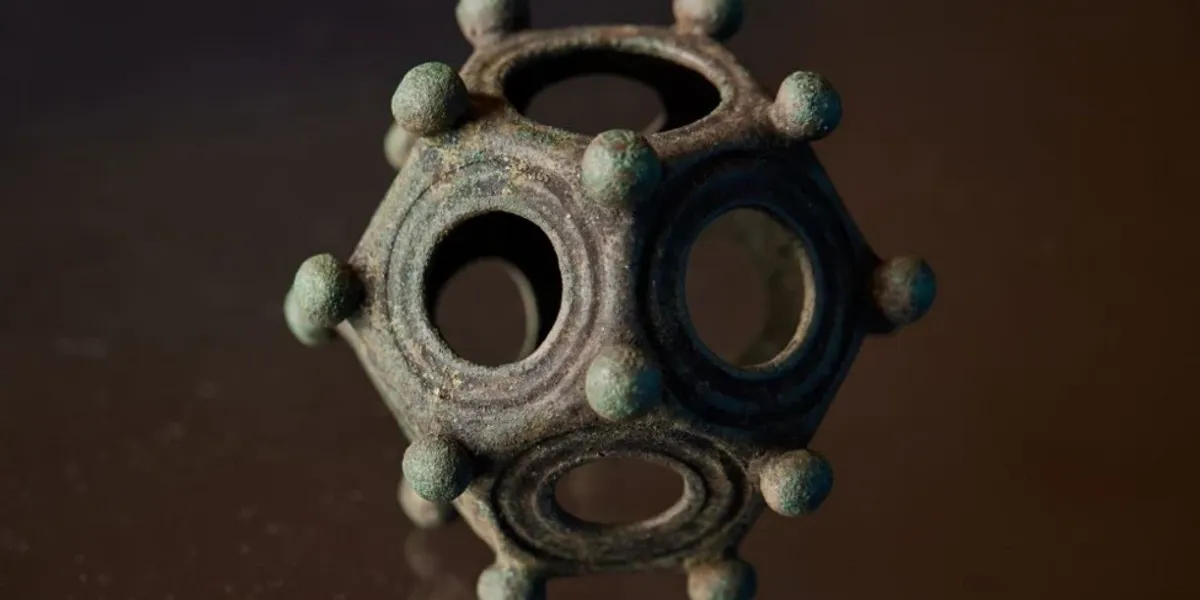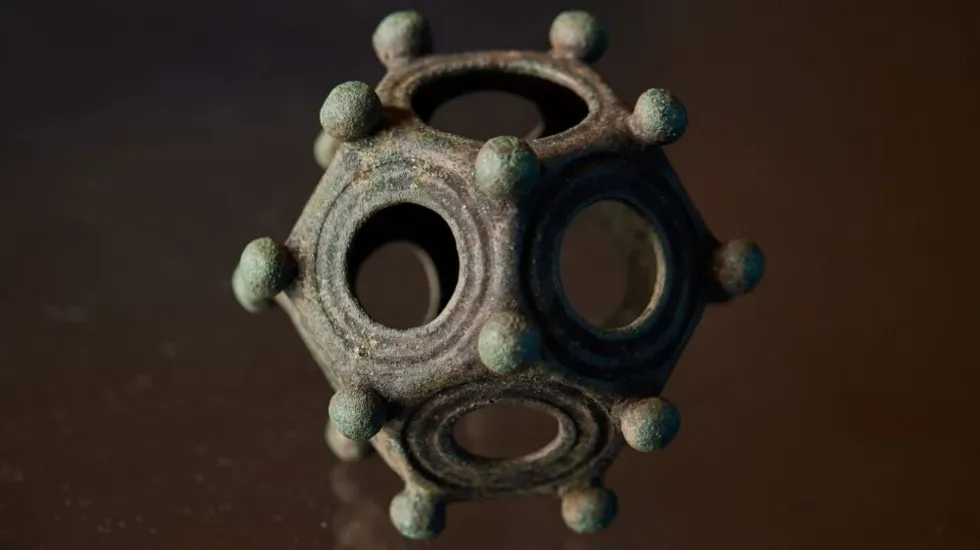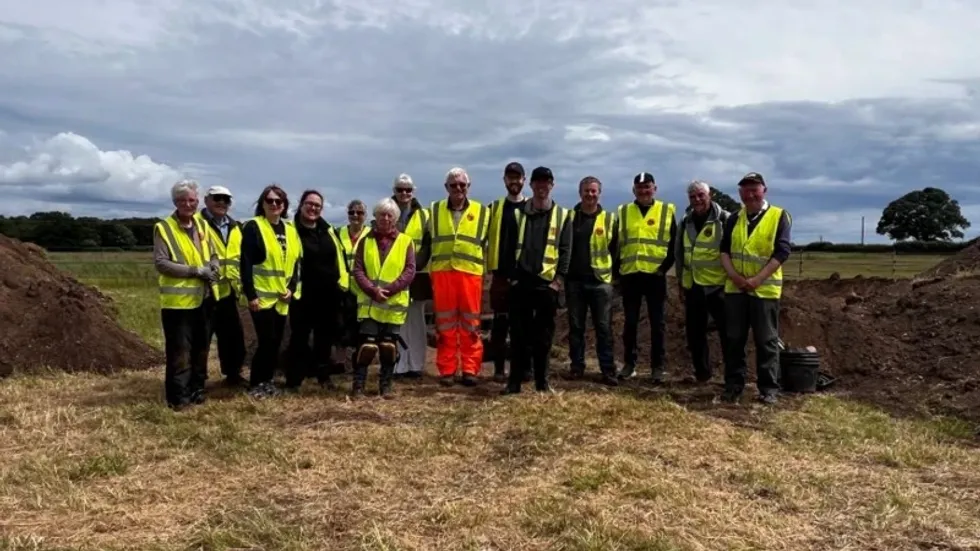



A rare "mysterious" Gallo-Roman artefact has been discovered by an amateur archaeological team in Lincolnshire.
The dodecahedron was found in the Potter Hill area of Norton Disney and is due to go on show at the University of Nottingham Museum at Lakeside Arts.
The museum said the item was one of archaeology's enigmas, and its use remains unknown.
The artefact, which stands 8cm tall and weighs 245g, has been described as a "rare and very fine example" of a Gallo-Roman dodecahedron.

Lincoln Museum/Phil Crow
|The purpose of the dodecahedron remains unknown
The Norton Disney History and Archaeology Group began excavating at a Roman site in the village close to a Roman villa and the Fosse Way Roman road in 2019, with the discovery of the artefact coming in 2023.
University of Nottingham Museum said the discovery is in "remarkable condition".
Richard Parker, secretary of the archaeology group, said: "We thought we were very much on a fairly routine Roman site, finding lots of Roman masonry, a huge amount of Roman pottery, and then on the second to last day, we made this really spectacular and unusual discovery of a Gallo-Roman dodecahedron.
"It was found unusually in a Roman quarry pit with lots of other materials, such as pottery, bone and nails."
In January 2024, Professor Alice Roberts described the find as "one of the greatest, most mysterious, archaeological objects".
People have been curious about dodecahedrons from Roman times for over 300 years, yet "nobody has an idea what they are".
Parker added: "It's so unusual, so odd in appearance, and just makes absolutely no sense.
"There's still a great mystery within archaeology."

Norton Disney Group
|The Norton Disney Group have been excavating the site since 2019
A total of 130 dodecahedra that have been found have come from the area known to the Romans as Gaul.
This included modern France and Belgium, Germany, Italy, Switzerland and parts of the Netherlands.
The artefact is part of a free Norton Disney dodecahedron exhibition, which looks back at the last couple of years of discoveries at the Roman site.
Parker added that the exhibition would also "illustrate the circumstances" of how the artefact was found and the history of the site.
